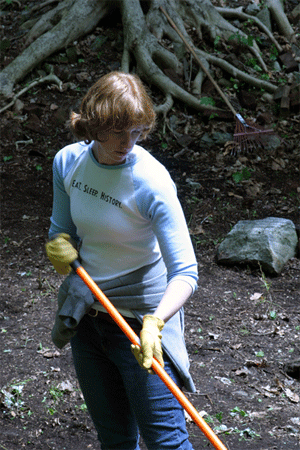
Author, Colleen, cleared out leaf and recently accumulated debris around her excavation unit.
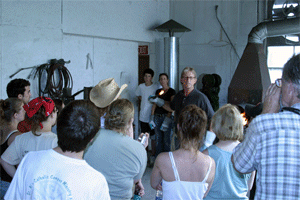
Dean Anderson explained blacksmithing, moulding, and conditions similar to those of the West Point Foundry.
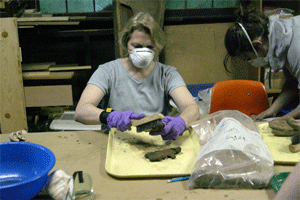
Terri Janson helped us out this week, including in the lab when we had a rainy morning.
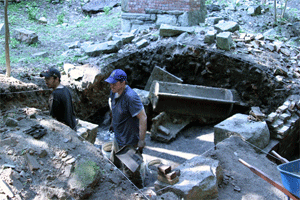
Carmelo & Dr. Sam continue to excavate in the block of units around the crucible base.
|
Howdy and welcome to week 6 at the West Point Foundry field school! My name is Colleen Reynolds and I am a Ph.D. candidate in American History and Historical Archaeology from the University of Idaho. This is my first field school, my previous archaeology experience was employment on two sites in 2004, one prehistory on the Clearwater River in Idaho and the other a historical Chinese site in Deadwood, South Dakota. I decided to attend this field school “back east” because of the importance of this Foundry in my studies of 19th century America.
I began the week in the unit where one of the casting pits was located. This casting pit was one of two seen in the famous John Weir painting from 1866 entitled “The Gun Foundry.” Amy, Ale and my continued excavation has provided Dan with great satisfaction and anticipation. Ale, Lawrence, and Dan continued working in the unit throughout the week, despite the presence of groundwater engulfing the casting pit. This fascinating unit was closed at the conclusion of the week after offering the crew much excitement, and ultimately more answers to the existence (and glimpse) of one of the casting pits that was used to make cannons in the early days of the Foundry’s operation.
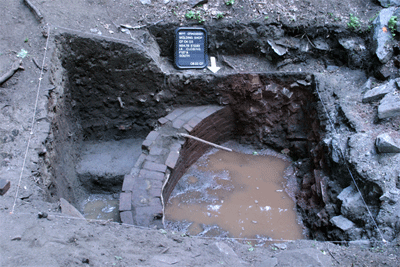
The casting pit, lined with brick, has flooded and will prevent additional excavation.
The crew ventured into the lab with Lee this week to process artifacts excavated thus far. This included our volunteer, Terri Janson. We also made a trip to Dean Anderson’s foundry and blacksmith shop to learn about the actual casting process as it similarly would have been performed at the West Point Foundry.
I finished up the week assisting Carmelo and Sam with mapping and further excavation in the units encompassing the area where one of the cupola furnaces was located. Sarah and Megan reopened 3B and discovered another floor in a central doorway from the early days of the Foundry’s operation.
Our volunteer Rob Yasinsac met up with most of the crew at Bannerman’s Island on Saturday to give us a walk around tour of the early 20th century arsenal. On the drive home we took a quick detour to visit Fort Montgomery from the American Revolution.
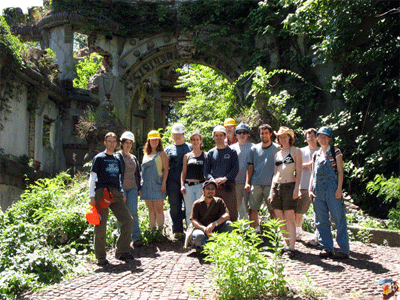
Our volunteer, Rob showed the crew around Bannerman's Island over the weekend.
The field school at the West Point Foundry in Cold Spring has provided me with knowledge about the inner workings of one aspect of early industry in American History and opened my eyes to the importance of industrial archaeology to my research and the discipline as a whole. My thanks to a great crew for the knowledge and friendship I have gained from the time resided in the beautiful state of New York.
|



